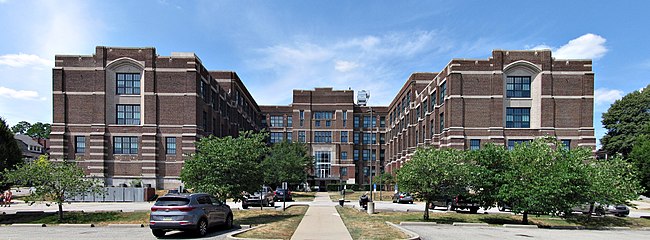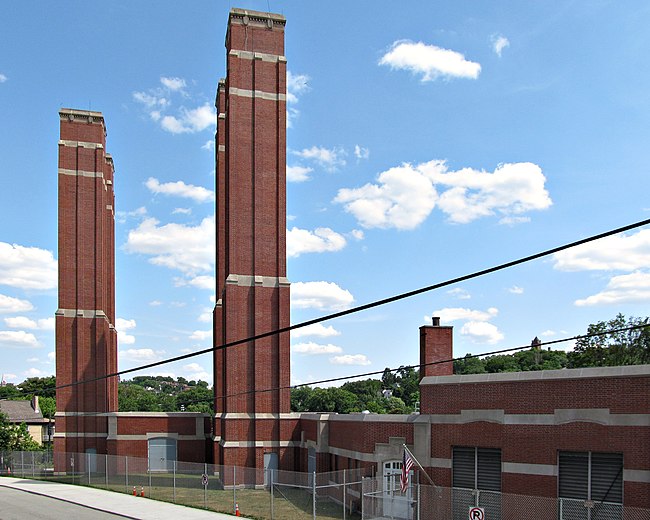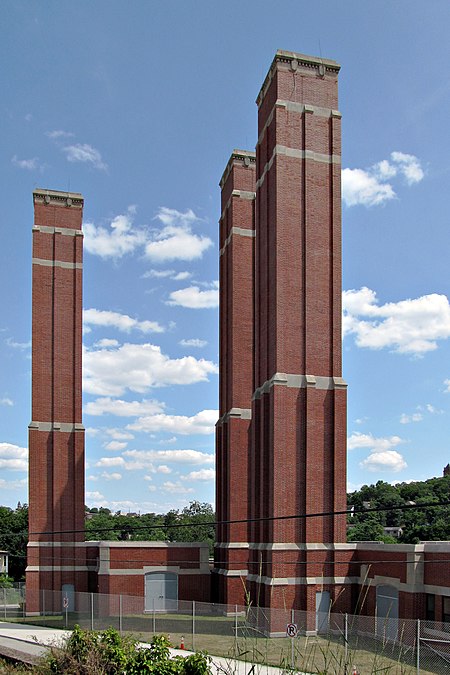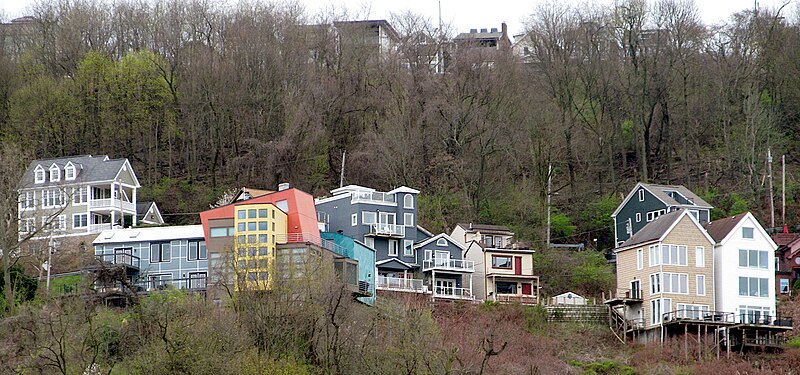
Here is another church with the sanctuary upstairs, but that is only part of the story. You had to be in good shape to go to services here, because the downstairs entrance is already a full flight of steps up from the street.

Note the direct entrance to the basement or sub-basement from the street level.
It was not as challenging as it looks to be a member of this church, though. This is the Southern Avenue front; the back extends to Greenbush Street, with an entrance level with the sanctuary. It’s a typical Pittsburgh lot with a two-storey drop from back to front.

This stained-glass inscription over the entrance is in abbreviated German. Father Pitt reads it as “Evangelical German United Protestant Church,” but anyone who knows German abbreviations is invited to make a correction in the comments. This was a very German part of the neighborhood a hundred years ago: diagonally across the street was a Männerchor hall, now replaced by an incongruous 1960s suburban-style split-level house.
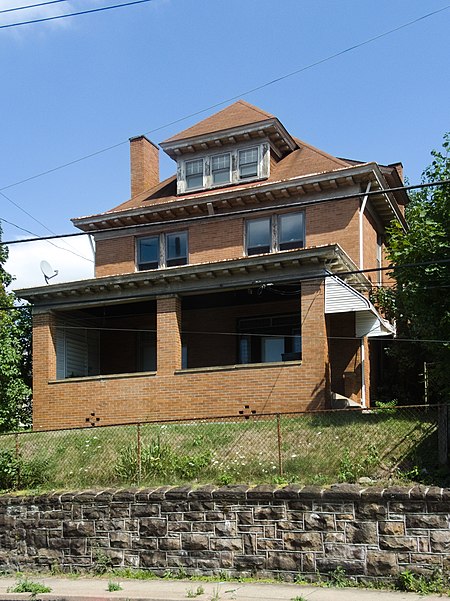
The parsonage was built at about the same time as the church (between 1910 and 1923, according to our old maps). The style is a lightly modern arts-and-crafts interpretation of the usual Pittsburgh foursquare house.
Addendum: It appears that the church and parsonage were built in about 1914 or shortly after, and the architect of both was John A. Long. From the Construction Record for May 16, 1914: “John A. Long, Machesney building, has been selected architect to prepare the plans for the erection of a brick church and parsonage in Mt. Washington, for the German Evangelical Protestant Congregation.” But just a week before, on May 9, 1914: “Architect H. Gilchrist, Frick building, has been selected to prepare plans for a church and parsonage, to be built on Mt. Washington, for the German Evangelical Protestant Congregation. No definite location for the building has been selected.” Since Long also appears a few months later as architect of the parsonage in particular, we are inclined to say that Long was the final choice. September 19, 1914: “Martsolf Brothers, House building, have secured the contract to build a two-story brick veneer parsonage, on Southern avenue, Mt. Washington, at a cost of $6,000, for the First German United Evangelical Protestant Congregation. Architect John A. Long, Benedum Trees building, prepared the plans.” (In the time between the listings, the Machesney Building had changed its name to the Benedum Trees Building; Long had not moved his office.)
Meanwhile, old Pa Pitt leaves his speculation about E. V. Denick below, so that you can see how wrong he was, unless he was right.
The former speculation: We have not yet found evidence of the architect of the church, but without a shred of documentation we are going to attribute it to E. V. Denick or Dennick (we find his name spelled both ways). His Bethlehem Evangelical Lutheran Church in Allentown is smaller, but has the same topographic problem to solve—being set into a steep hill—and solves it in a very similar way. The two churches share so many quirks of style that old Pa Pitt is inclined to say that they are the responses of the same architect to the same problem with two very different budgets. That they were both built for German congregations, and very near each other, is social evidence to add to the stylistic evidence.




